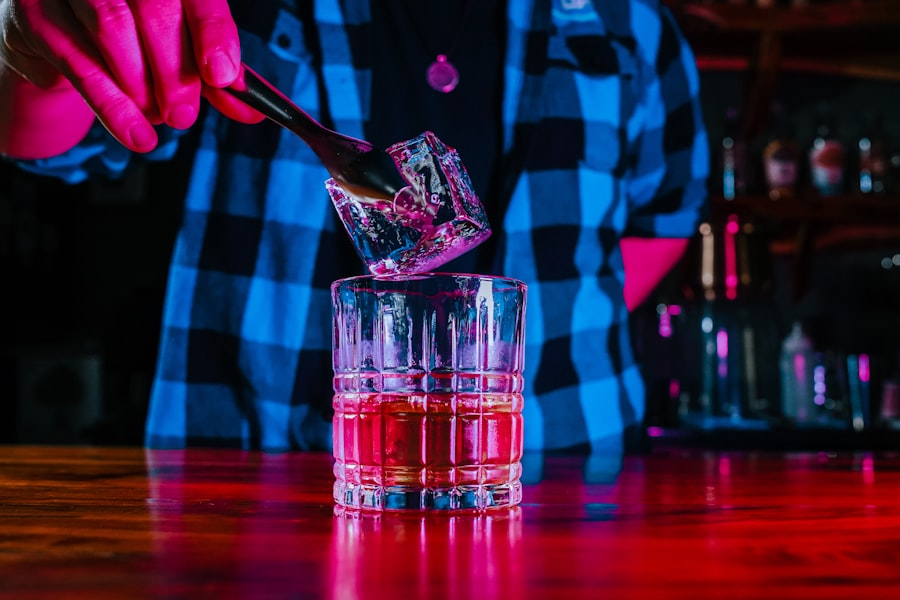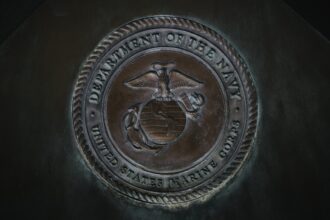The Molotov cocktail, a simple yet effective incendiary device, traces its origins back to the tumultuous period of the Spanish Civil War in the late 1930s. Named after Vyacheslav Molotov, a Soviet politician and diplomat, the cocktail was initially conceived as a means for the Republican forces to combat the Nationalist troops led by Francisco Franco. The device itself is composed of a glass bottle filled with flammable liquid, typically gasoline, and is ignited before being thrown at a target.
This makeshift weapon quickly gained notoriety for its effectiveness against armored vehicles and enemy positions, allowing those with limited resources to level the playing field in combat. As the Spanish Civil War unfolded, the Molotov cocktail became emblematic of guerrilla warfare tactics. It represented a shift in how ordinary citizens could engage in armed conflict, utilizing readily available materials to create a weapon that could inflict significant damage.
The cocktail’s design was simple enough for anyone to replicate, which contributed to its widespread adoption in various conflicts around the world. Over time, it evolved from a tool of desperation into a symbol of resistance against oppression, embodying the spirit of those who fought against overwhelming odds.
Key Takeaways
- The Molotov Cocktail was named after Soviet foreign minister Vyacheslav Molotov and was first used during the Winter War between Finland and the Soviet Union in 1939-1940.
- Molotov Cocktails have been used as a low-cost, easily accessible weapon in asymmetrical warfare and guerrilla tactics, often by non-state actors.
- Molotov Cocktails have been used in civil unrest and protests as a means of resistance and as a symbol of defiance against authority.
- The use of Molotov Cocktails in modern conflict has had a significant impact on the tactics and strategies employed by both state and non-state actors.
- The ethical and legal implications of using Molotov Cocktails in conflict and protest raise questions about the use of improvised incendiary devices and the potential harm to civilians.
The Role of the Molotov Cocktail in Warfare
Throughout history, the Molotov cocktail has played a pivotal role in various military conflicts, particularly in asymmetrical warfare scenarios where conventional forces face off against insurgents or guerrilla fighters. Its effectiveness lies not only in its ability to cause destruction but also in its psychological impact on both the user and the target. For those wielding it, the Molotov cocktail serves as an empowering tool that allows them to fight back against more heavily armed adversaries.
In many instances, the Molotov cocktail has been used to target vehicles, buildings, and even personnel. Its ability to ignite quickly and create chaos has made it a favored weapon among insurgents and resistance fighters.
During World War II, for example, Soviet soldiers famously employed Molotov cocktails against German tanks during the Siege of Leningrad. The device’s simplicity and effectiveness allowed even those with minimal training to engage in combat, making it a staple in various theaters of war. As conflicts evolved, so too did the tactics surrounding the use of Molotov cocktails, adapting to new challenges and environments.
Molotov Cocktails in Civil Unrest and Protests

Beyond traditional warfare, Molotov cocktails have become synonymous with civil unrest and protests around the globe. In situations where peaceful demonstrations are met with violent repression, protesters have resorted to using these incendiary devices as a means of self-defense or as a form of protest against oppressive regimes. The cocktail’s ability to disrupt and draw attention to a cause has made it a potent symbol of resistance in various social movements.
The use of Molotov cocktails during protests often reflects a deep-seated frustration with systemic injustices. For instance, during the 1968 protests in Paris, students and workers alike utilized these makeshift weapons to express their discontent with the government and societal norms. Similarly, during the Arab Spring uprisings, protesters across several countries employed Molotov cocktails as a means to challenge authoritarian regimes.
In these contexts, the cocktail transcends its role as a weapon; it becomes a powerful statement against oppression and a call for change.
Molotov Cocktails as a Tool of Resistance
| Country | Number of Molotov Cocktails Used | Effectiveness |
|---|---|---|
| Venezuela | Unknown | Used in protests against government |
| Ukraine | Unknown | Used in Euromaidan protests |
| Palestine | Unknown | Used in conflicts with Israeli forces |
The Molotov cocktail has emerged as a potent symbol of resistance across various movements throughout history. Its very nature embodies the spirit of defiance against oppression and injustice. For marginalized groups fighting for their rights, this incendiary device represents not just a means of physical resistance but also an assertion of agency in the face of overwhelming power.
The act of creating and using a Molotov cocktail can be seen as an act of desperation but also as an assertion of identity and purpose. In many cases, the use of Molotov cocktails has galvanized communities around shared grievances. They serve as rallying points for collective action, uniting individuals under a common cause.
The imagery associated with these devices—protesters standing defiantly with lit bottles—has become iconic in visual representations of resistance movements. This symbolism extends beyond mere violence; it encapsulates the struggle for dignity and justice in societies where traditional avenues for change have been blocked or ignored.
The Impact of Molotov Cocktails on Modern Conflict
In contemporary conflicts, the Molotov cocktail continues to be relevant as both a weapon and a symbol. Its use has been observed in various uprisings and insurgencies around the world, from urban protests to rural guerrilla warfare. The adaptability of this incendiary device allows it to fit into diverse contexts, making it an enduring tool for those seeking to challenge authority or resist oppression.
As modern warfare evolves with technology and tactics, the Molotov cocktail remains a reminder of grassroots resistance. Moreover, the impact of Molotov cocktails on modern conflict extends beyond their immediate destructive capabilities. They often serve as catalysts for broader social movements, igniting passions and mobilizing individuals who may have previously felt powerless.
The sight of protesters wielding these devices can inspire others to join their cause or take action in their own communities. In this way, the Molotov cocktail transcends its role as a mere weapon; it becomes a symbol of hope and resilience in the face of adversity.
The Ethical and Legal Implications of Molotov Cocktails

The use of Molotov cocktails raises significant ethical and legal questions within both national and international contexts. While they may be viewed as tools of resistance by some, their deployment can lead to severe consequences, including loss of life and property damage. International humanitarian law prohibits indiscriminate attacks that do not distinguish between combatants and civilians; thus, the use of such incendiary devices can be seen as violating these principles when employed in populated areas.
Furthermore, legal frameworks vary widely across different jurisdictions regarding the possession and use of Molotov cocktails. In some countries, they are classified as weapons and are subject to strict regulations; in others, they may be viewed as legitimate tools for protest. This disparity complicates discussions about their ethical implications, particularly when considering the motivations behind their use.
While some may argue that they are justified in contexts of oppression or injustice, others contend that resorting to violence undermines the legitimacy of social movements.
The Symbolism of Molotov Cocktails in Political Movements
The Molotov cocktail has transcended its practical application to become a powerful symbol within political movements worldwide. It embodies resistance against tyranny and oppression while also representing the struggle for justice and equality. In many cases, images of protesters wielding Molotov cocktails have become iconic representations of broader social movements, capturing the spirit of defiance against established power structures.
This symbolism is particularly potent in contexts where peaceful protests have been met with violent repression. The act of throwing a Molotov cocktail can be seen as an assertion of agency by those who feel marginalized or silenced by authority figures. As such, it serves not only as a weapon but also as a rallying cry for collective action and solidarity among those fighting for change.
The imagery associated with these devices often resonates deeply within communities facing systemic injustices, reinforcing their resolve to challenge oppressive systems.
Molotov Cocktails in Popular Culture
The presence of Molotov cocktails in popular culture further underscores their significance as symbols of rebellion and resistance. From films to music videos, these incendiary devices have been depicted as tools wielded by protagonists fighting against corrupt systems or oppressive regimes. Their portrayal often romanticizes the act of rebellion while simultaneously highlighting the complexities surrounding violence and resistance.
In cinema, films depicting revolutionary movements frequently feature scenes where characters resort to using Molotov cocktails as acts of defiance. These portrayals can evoke strong emotional responses from audiences, framing such actions within narratives that emphasize justice and moral righteousness. Similarly, music genres like punk rock have embraced the imagery associated with Molotov cocktails as symbols of anti-establishment sentiment, further embedding them into cultural consciousness.
The Evolution of Molotov Cocktail Design and Use
Over time, the design and use of Molotov cocktails have evolved alongside advancements in materials and technology. While traditional versions typically consist of glass bottles filled with flammable liquids like gasoline or alcohol, modern iterations may incorporate additional elements such as rags or other accelerants to enhance their effectiveness. This evolution reflects not only changes in available resources but also adaptations to different combat environments.
Moreover, variations in design have emerged based on regional contexts and specific tactical needs. In urban settings where mobility is crucial, smaller bottles may be favored for ease of concealment and quick deployment. Conversely, larger containers might be utilized in rural guerrilla warfare scenarios where targets are more stationary.
This adaptability underscores the enduring relevance of the Molotov cocktail as both a weapon and a symbol within diverse conflict landscapes.
The Global Spread of Molotov Cocktails
The global spread of Molotov cocktails is indicative of their appeal as accessible tools for resistance across various cultures and conflicts. From Latin America to Eastern Europe and beyond, these incendiary devices have been employed by diverse groups seeking to challenge authority or fight against perceived injustices. Their simplicity allows individuals with limited resources to engage in armed struggle or protest effectively.
As conflicts arise around the world—whether due to political oppression, economic inequality, or social injustice—the use of Molotov cocktails often emerges as a common thread among disparate movements. This phenomenon highlights not only the universality of human struggles but also the adaptability of grassroots resistance tactics in response to local conditions. The global proliferation of these devices serves as a testament to their enduring significance within contemporary struggles for justice.
The Future of Molotov Cocktails in Conflict and Protest
Looking ahead, the future role of Molotov cocktails in conflict and protest remains uncertain yet intriguing. As societies continue to grapple with issues such as inequality, authoritarianism, and social unrest, it is likely that these incendiary devices will persist as symbols of resistance among marginalized groups seeking change. However, evolving technologies may also influence how individuals engage in protest or armed struggle.
While traditional forms of protest may still incorporate Molotov cocktails as tools for defiance, advancements in technology could lead to new methods for expressing dissent or challenging authority. Digital activism and nonviolent resistance strategies may gain prominence alongside more traditional tactics involving physical confrontation. Nevertheless, regardless of how tactics evolve over time, the symbolism associated with Molotov cocktails will likely endure—representing both hope for change and the complexities inherent in struggles against oppression.
In conclusion, the Molotov cocktail stands as a multifaceted symbol within historical narratives surrounding warfare, civil unrest, resistance movements, popular culture, and ethical considerations surrounding violence. Its origins rooted in desperation have transformed it into an enduring emblematic tool for those fighting against injustice across diverse contexts worldwide. As societies continue navigating complex challenges related to power dynamics and social change—whether through peaceful means or more confrontational approaches—the legacy—and future—of this incendiary device will undoubtedly remain significant within ongoing struggles for justice and equality.
In exploring the historical analysis of the Molotov cocktail, it’s essential to consider the broader context of unconventional warfare tactics. An insightful article that delves into similar themes can be found on the website “In the War Room.
For those interested in expanding their understanding of these tactics, I recommend reading the related article available at In the War Room. This resource offers valuable perspectives on the development and impact of improvised weapons like the Molotov cocktail throughout history.
FAQs
What is a Molotov cocktail?
A Molotov cocktail is a makeshift incendiary weapon typically consisting of a glass bottle filled with a flammable liquid such as gasoline, with a cloth wick inserted into the bottle’s opening. When lit, the wick ignites the liquid, causing the bottle to burst into flames upon impact.
What is the history of the Molotov cocktail?
The Molotov cocktail was first used during the Spanish Civil War in the late 1930s, and its use became widespread during World War II. The name “Molotov cocktail” is derived from Vyacheslav Molotov, a Soviet politician, as a sarcastic reference to the incendiary bombs dropped by the Soviet Air Force during the Winter War with Finland in 1939-1940.
How has the Molotov cocktail been used in conflicts?
The Molotov cocktail has been used as a weapon in numerous conflicts and uprisings around the world, including the Vietnam War, the Arab-Israeli conflict, and various civil unrest situations. It is often employed by guerrilla fighters and protesters as a low-cost, easily accessible weapon against military forces or law enforcement.
What are the legal implications of using Molotov cocktails?
The use of Molotov cocktails is illegal in most countries, as they are considered destructive devices and are often classified as illegal weapons. The use of Molotov cocktails in conflicts or protests can result in serious legal consequences, including criminal charges and imprisonment.




